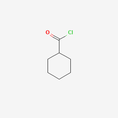Introduction
Hexamethyldisilazane, commonly abbreviated as HMDS, is an organosilicon compound with the chemical formula [(CH₃)₃Si]₂NH. It is a colorless, volatile liquid with a pungent odor. HMDS is an important intermediate in the field of organic silicon chemistry and has a wide range of applications in various industries due to its unique chemical properties.
Advantages
Surface Modification: HMDS can effectively modify the surface properties of various materials. It forms a thin, hydrophobic layer on the surface, which can improve the adhesion of subsequent coatings, films, or other materials. This is particularly useful in microelectronics and semiconductor manufacturing, where it helps to enhance the adhesion of photoresists to silicon wafers.
Moisture Resistance: The hydrophobic nature of HMDS - treated surfaces makes them highly resistant to moisture. This property is beneficial in protecting sensitive electronic components from corrosion and damage caused by humidity, thereby extending their service life.
Chemical Stability: HMDS is relatively stable under normal conditions. It can withstand a certain range of temperatures and chemical environments without significant decomposition, which ensures its reliability in different industrial processes.
Low Viscosity: As a low - viscosity liquid, HMDS is easy to handle and apply. It can be easily mixed with other solvents or reagents, facilitating its use in various formulations.
Applications
Microelectronics and Semiconductor Industry
Photoresist Adhesion: In photolithography processes, HMDS is used as an adhesion promoter between the silicon wafer surface and the photoresist. It helps to prevent the photoresist from peeling off during subsequent processing steps, ensuring high - quality pattern transfer.
Surface Passivation: HMDS can passivate the surface of semiconductor devices, reducing surface defects and improving device performance and reliability.
Pharmaceutical Industry
Protecting Group in Organic Synthesis: HMDS can be used as a silylating agent to introduce trimethylsilyl (TMS) protecting groups in organic synthesis. These protecting groups can selectively protect certain functional groups in molecules, allowing for specific chemical reactions to occur at other sites.
Drug Formulation: It can also be used in the formulation of some drugs to improve their solubility and stability.
Coating and Paint Industry
Improving Adhesion: HMDS can enhance the adhesion of coatings and paints to substrates, especially on difficult - to - bond surfaces such as plastics and metals. This results in more durable and long - lasting coatings.
Water Repellency: By incorporating HMDS into coating formulations, the resulting coatings can exhibit excellent water - repellent properties, protecting the substrate from water damage.
Analytical Chemistry
Derivatization Reagent: In gas chromatography and mass spectrometry, HMDS is used as a derivatization reagent to convert polar compounds into more volatile and thermally stable derivatives, which facilitates their analysis.
Frequently Asked Questions (FAQ)
Q1: Is HMDS toxic?
A1: HMDS is considered to be a moderately toxic compound. It can cause irritation to the skin, eyes, and respiratory tract. Prolonged or repeated exposure may have more serious health effects. Therefore, appropriate personal protective equipment (PPE) such as gloves, goggles, and respirators should be worn when handling HMDS, and operations should be carried out in a well - ventilated area.
Q2: How should HMDS be stored?
A2: HMDS should be stored in a cool, dry, and well - ventilated place. It should be kept away from sources of ignition, heat, and moisture. The container should be tightly sealed to prevent evaporation and contamination. It is also recommended to store HMDS away from incompatible substances such as strong acids, strong bases, and oxidizing agents.
Q3: Can HMDS be used in food - related applications?
A3: HMDS is not approved for direct use in food - related applications. Its main applications are in industrial fields such as microelectronics, pharmaceuticals, and coatings. Due to its potential toxicity, it is not suitable for contact with food or food - processing equipment.
Q4: What is the shelf life of HMDS?
A4: Under proper storage conditions, the shelf life of HMDS is typically about 1 - 2 years. However, its quality may gradually decline over time, especially if it is exposed to unfavorable conditions such as high temperature, humidity, or air. It is recommended to check the product's quality before use, especially if it has been stored for a long time.
Q5: How can I dispose of HMDS safely?
A5: HMDS should be disposed of in accordance with local environmental regulations. It is usually recommended to contact a professional waste disposal company. Do not pour HMDS into sewers, water bodies, or the ground. Incineration may be an option in some cases, but it should be carried out in a specialized incineration facility to ensure complete combustion and prevent the release of harmful substances.
Hot Tags: hexamethyldisilazane hmds, China hexamethyldisilazane hmds manufacturers, suppliers, factory, chemicals for pharmaceutical intermediates, wholesale pharmaceutical intermediates, pharmaceutical intermediate exporters, pharmaceutical intermediate standards, pharmaceutical intermediate output, pharmaceutical intermediate inventory











